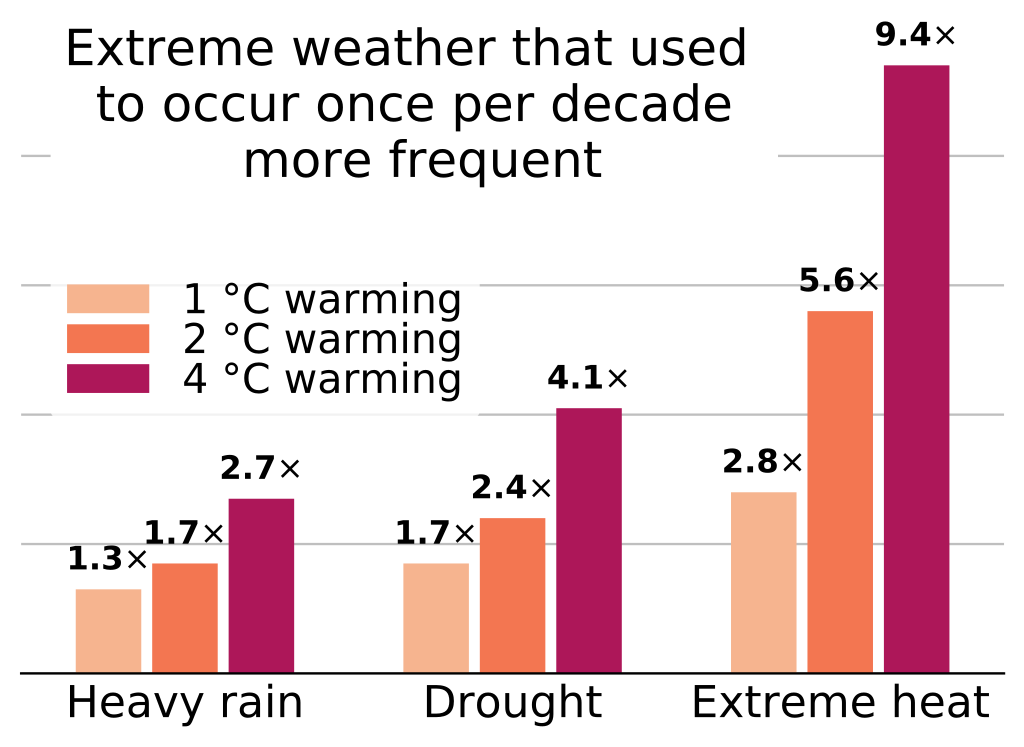NB4 East Coast lows kill 21+ citizens — worse to come
As long as global warming continues ever more extreme weather can be expected. Is our govt. doing enough to help mitigation & adaptation?

by Barbara Norman, 09/03/2022 in The Conversation
The devastating floods in Queensland and New South Wales highlight, yet again, Australia’s failure to plan for natural disasters. As we’re seeing now in heartbreaking detail, everyday Australians bear the enormous cost of this inaction. It’s too soon to say whether the current floods are directly linked to climate change. But we know such disasters are becoming more frequent and severe as the climate heats up. In 2019, Australia ranked last out of 54 nations on its strategy to cope with climate change.
Read the complete article…
Featured Image: The IPCC Sixth Assessment Report (2021) projects that ten year extreme weather events will become more common compared to the pre-industrial era. Based on data from Fig. SPM.6 of: Climate Change 2021 / The Physical Science Basis / Working Group I contribution to the WGI Sixth Assessment Report of the Intergovernmental Panel on Climate Change / Summary for Policymakers. IPCC.ch SPM-23. Intergovernmental Panel on Climate Change (9 August 2021). Source states: ● Hot temperature extremes over land – 10-year event – Frequency and increase in intensity of extreme temperature event that occurred once in 10 years on average in a climate without human influence; ● Heavy precipitation over land – 10-year event – Frequency and increase in intensity of heavy 1-day precipitation event that occurred once in 10 years on average in a climate without human influence; ● Agricultural & ecological droughts in drying regions – 10-year event – Frequency and increase in intensity of an agricultural and ecological drought event that occurred once in 10 years on average across drying regions in a climate without human influence. / Date: 29/20/2019 / Author: Femkemilene / Licensing: Creative Commons Attribution-Share Alike 4.0 International.
